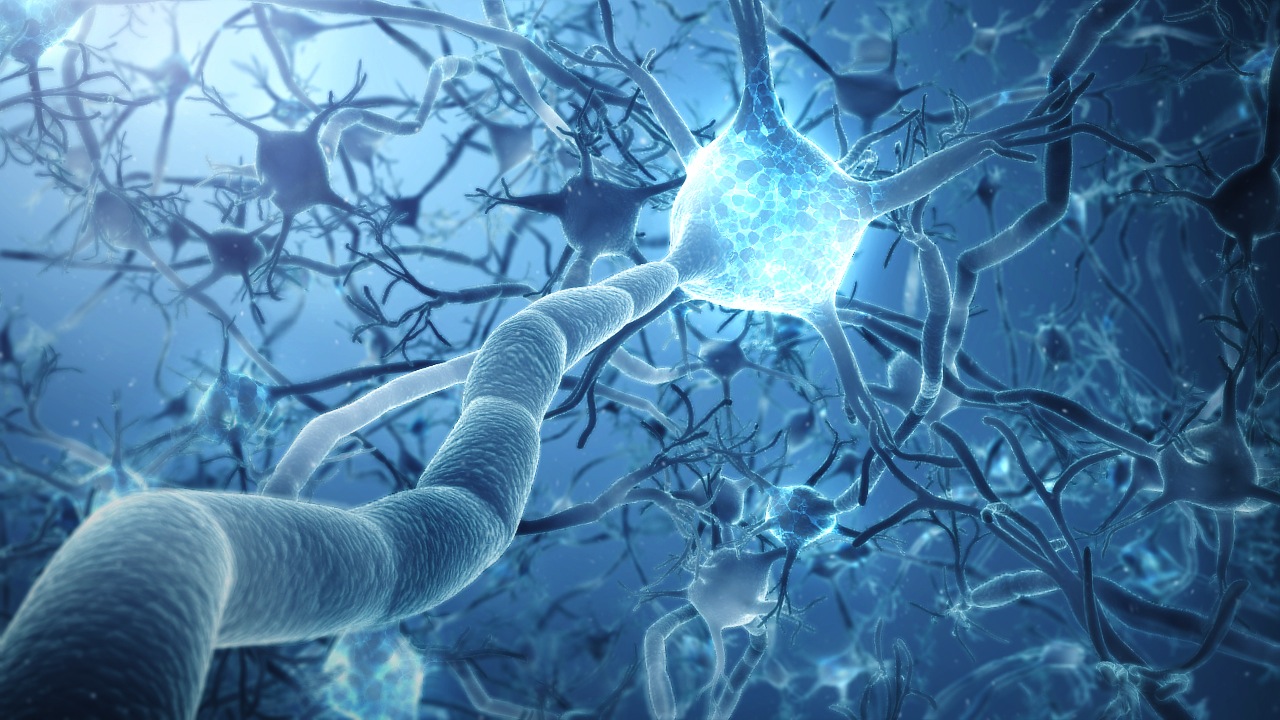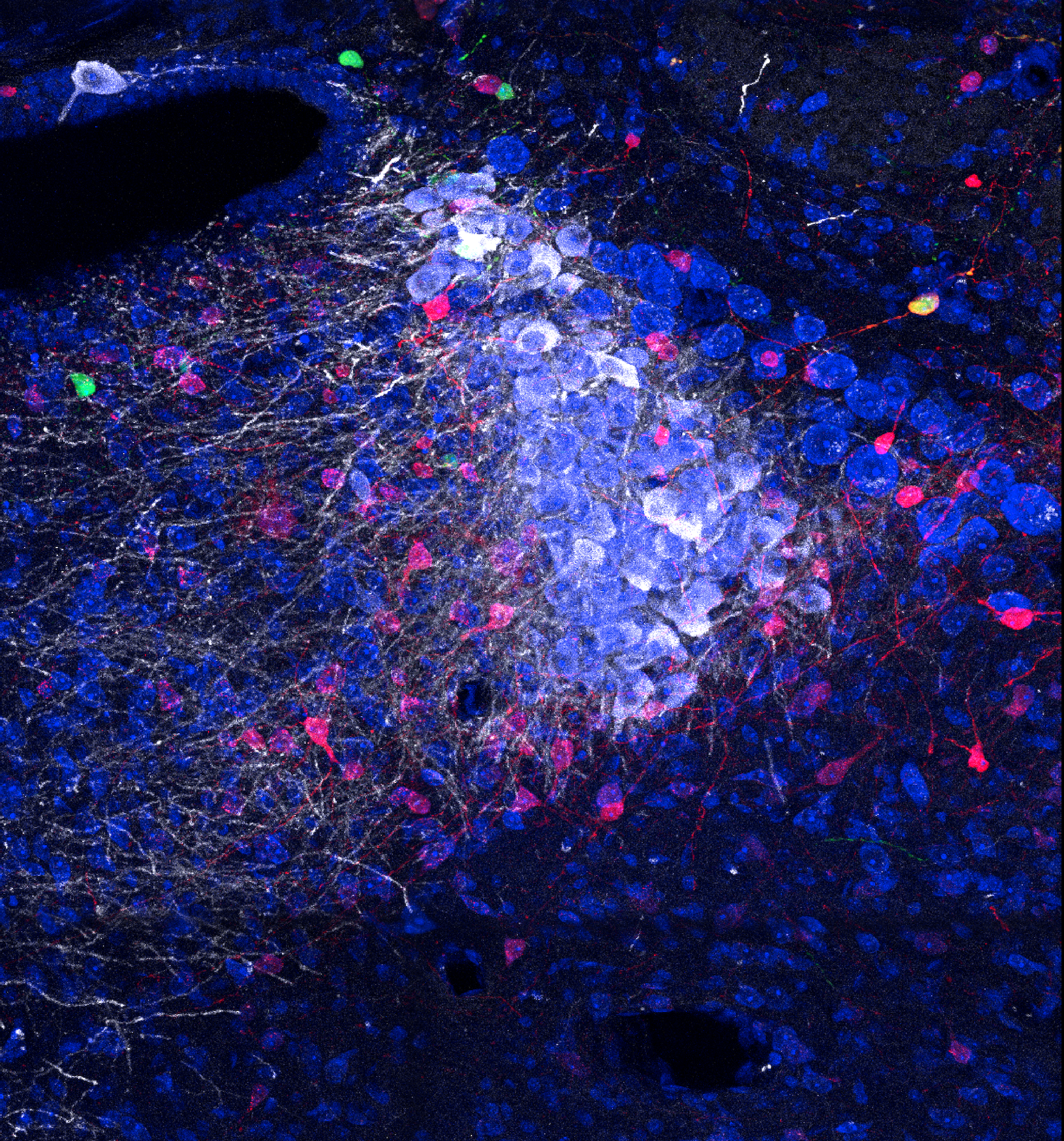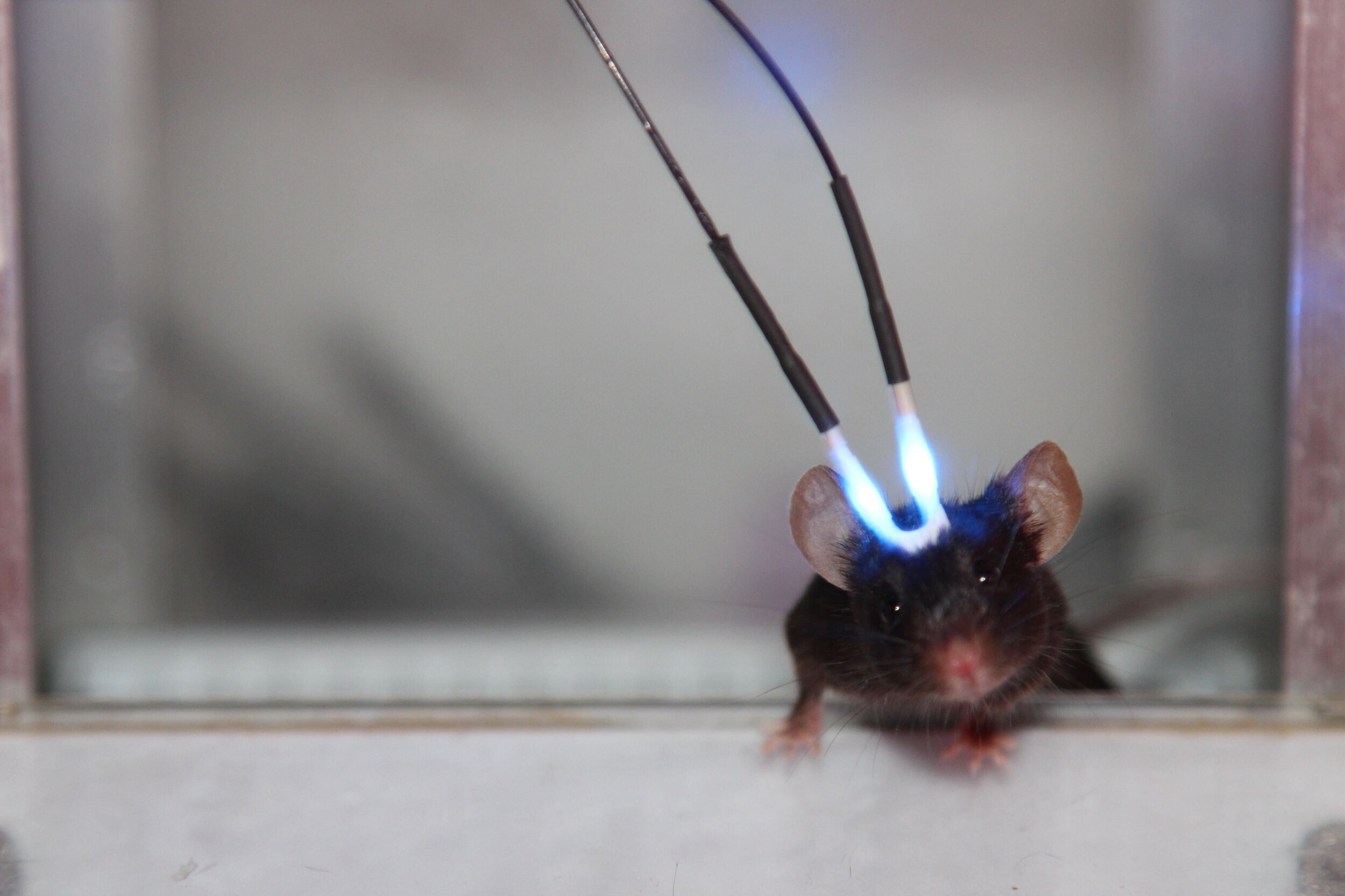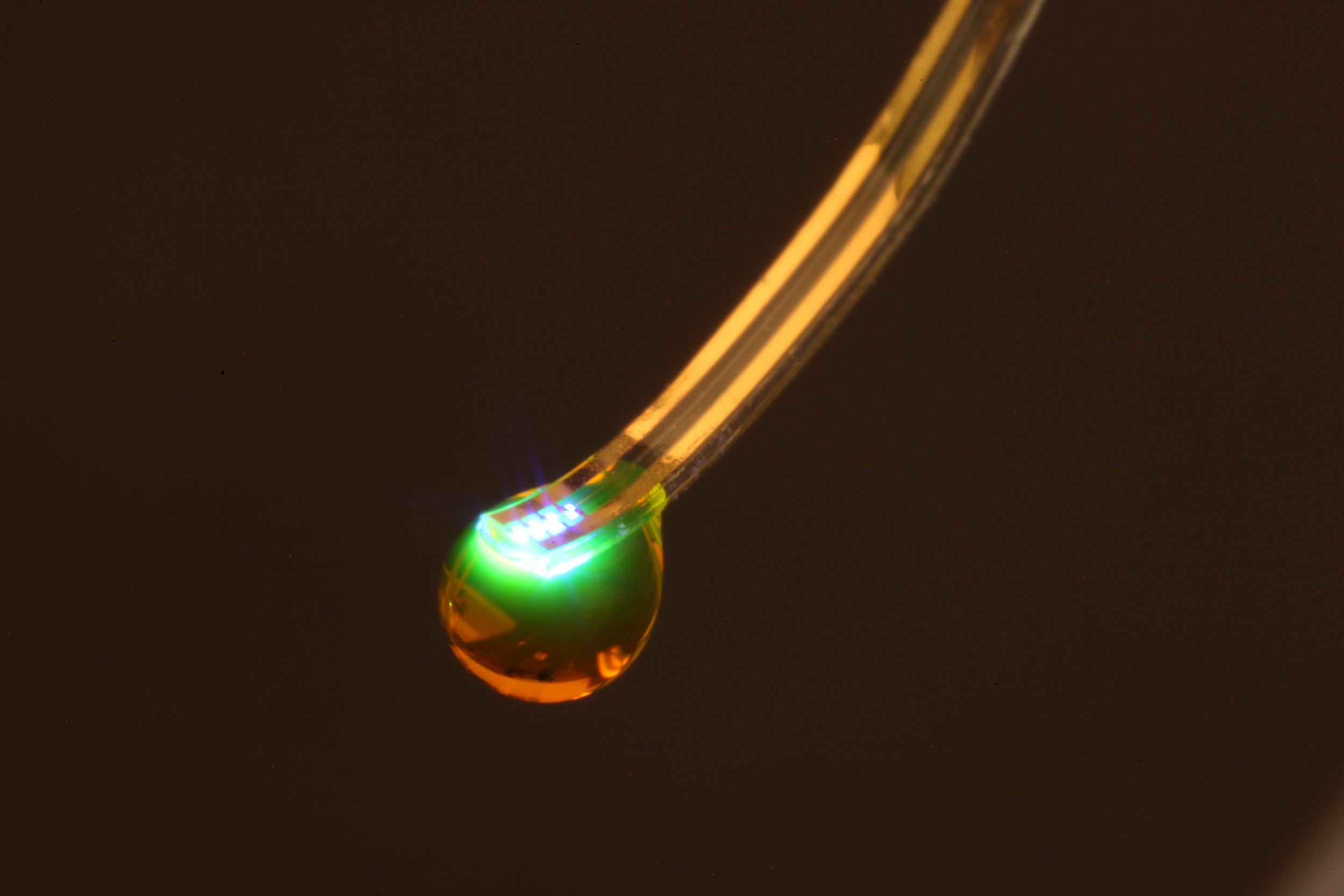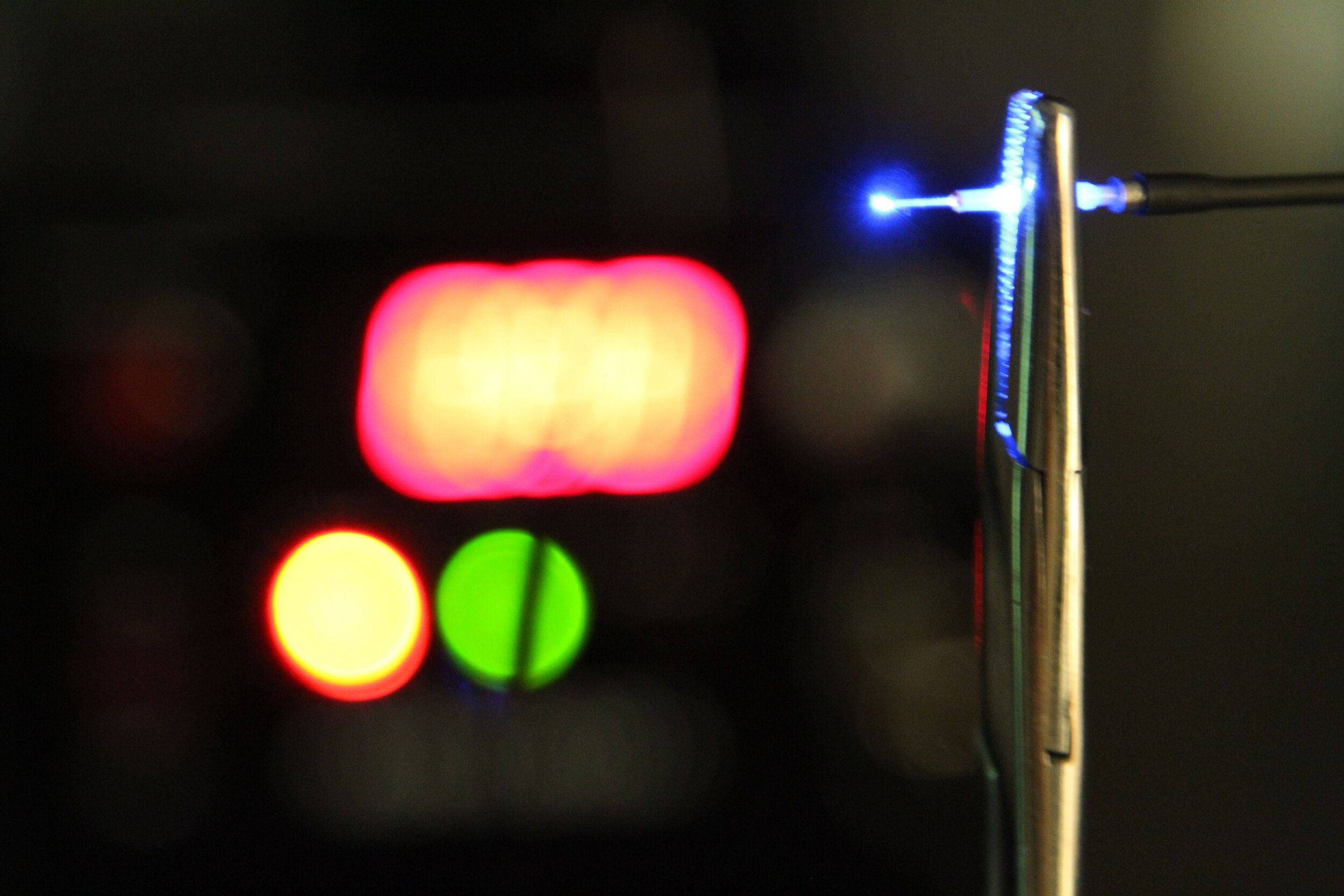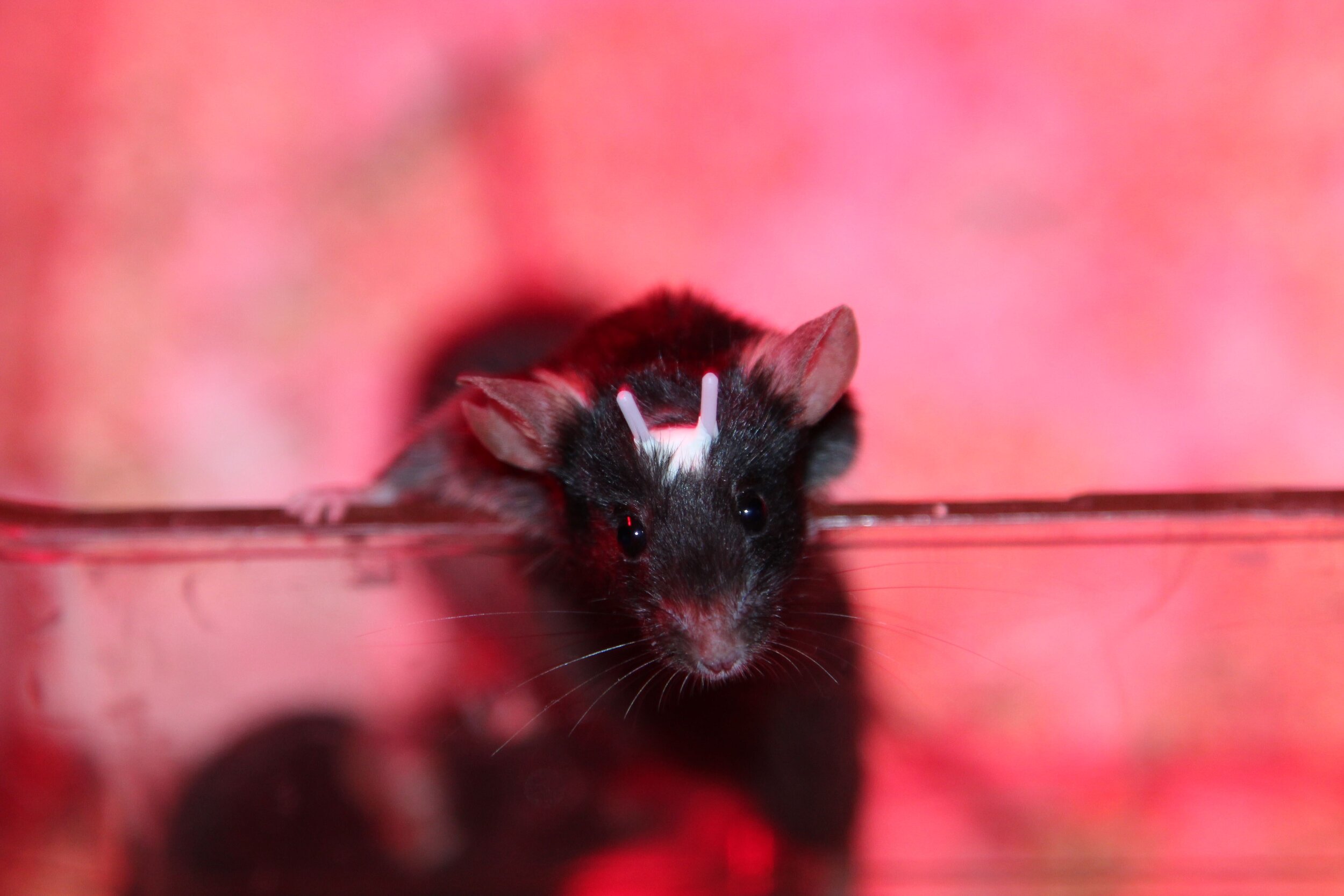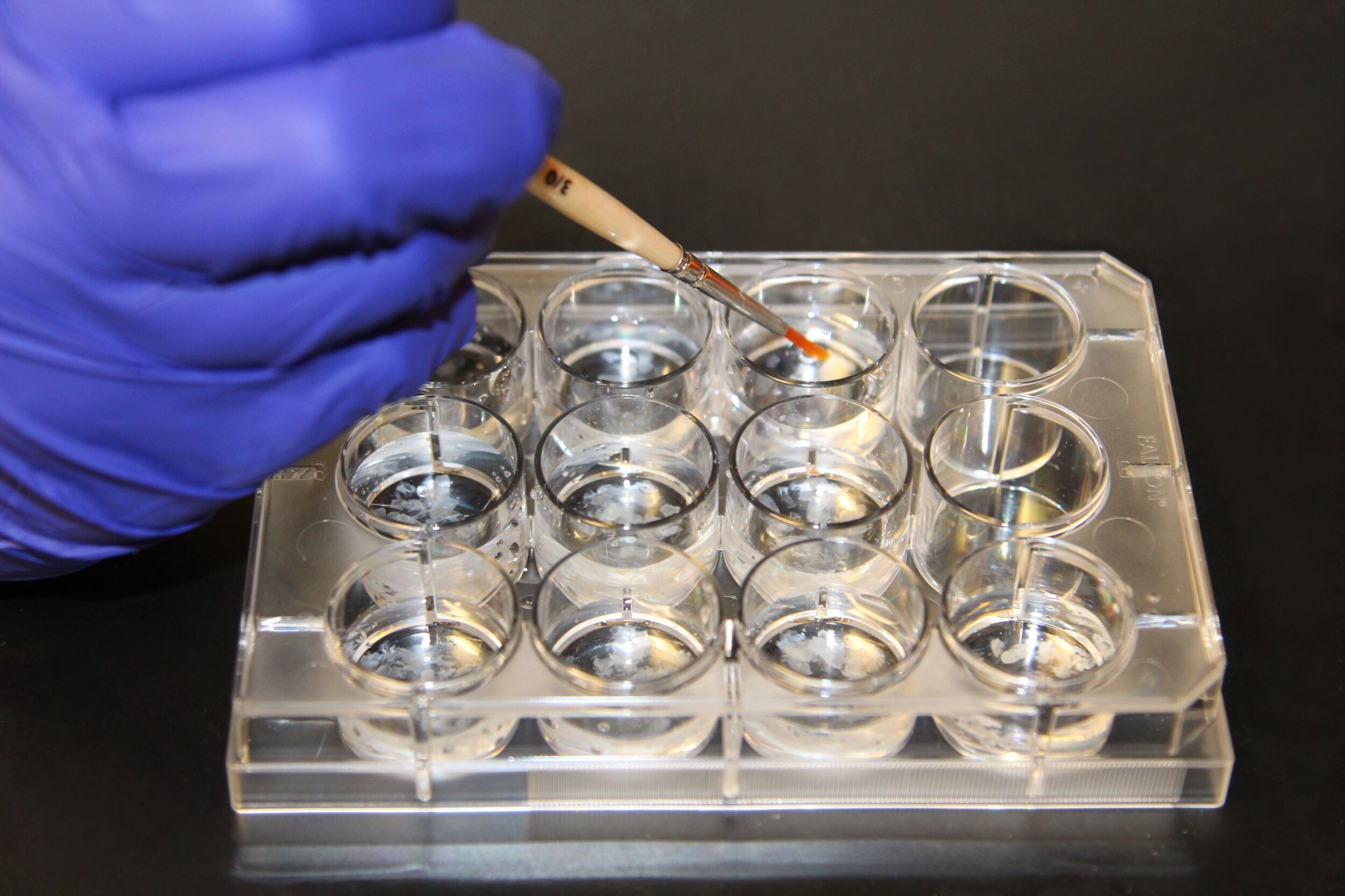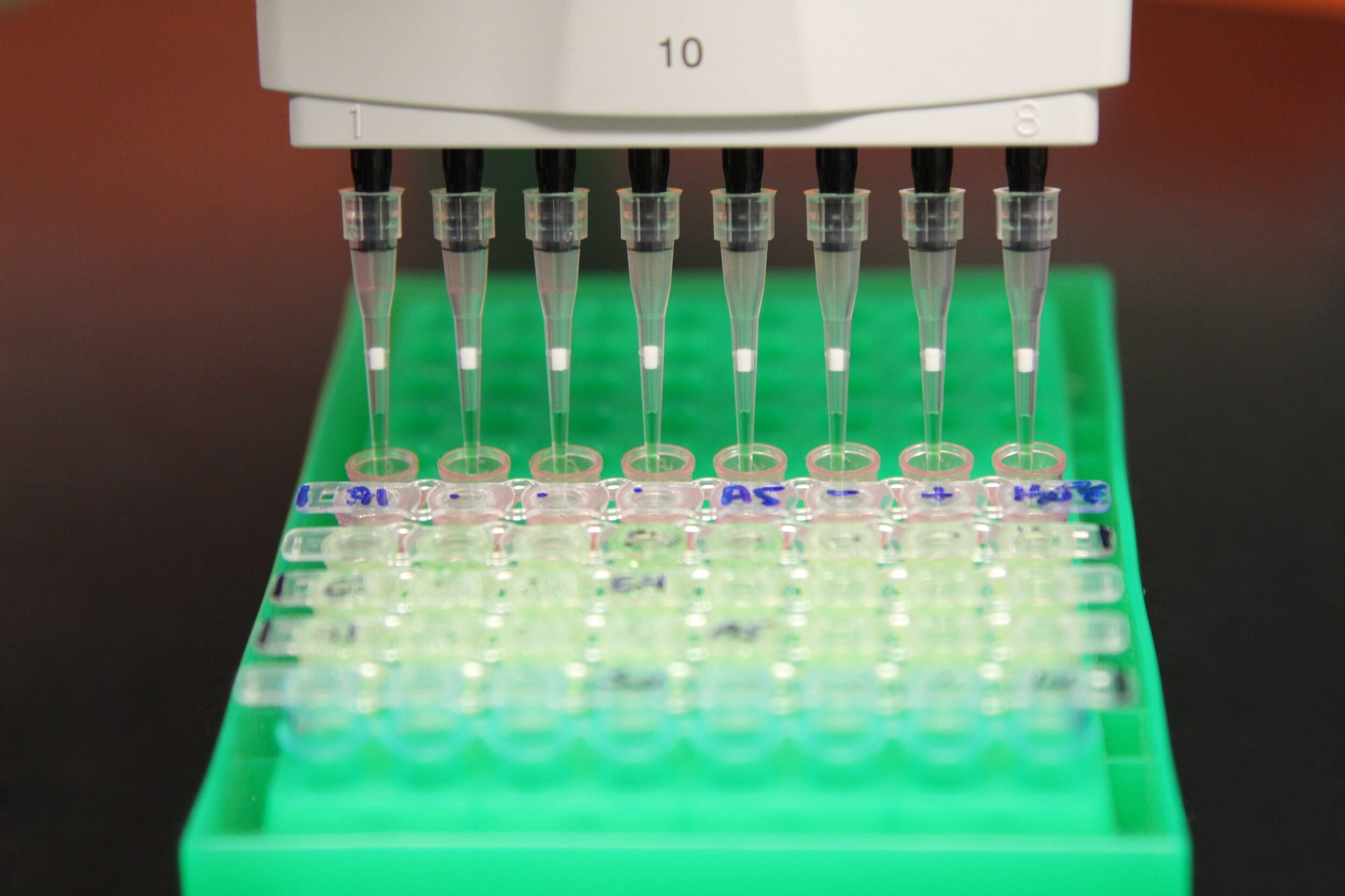GPCRs IN NEURAL CIRCUITS AND AFFECTIVE BEHAVIOR
Stress and pain-induced behavior is controlled by specific neurotransmitters and their signaling partners in the central and peripheral nervous systems. Many of these signals are conveyed through activation of neuropeptide and monoamine receptor systems. These receptors are seven transmembrane spanning G-protein coupled receptors (GPCR, also called 7 transmembrane receptors) and they engage a variety of signaling cascades following neurotransmitter release and receptor binding. To expand our knowledge of the inner workings of the brain and to identify treatments for psychiatric diseases, the Bruchas laboratory aims to dissect how GPCR systems function in the contexts of stress, depression, addiction, and pain. We strive for a greater understanding of these receptors in real time, within intact systems, and biologically relevant models of behavior. We utilize pharmacological, optogenetic, genetic, viral, imaging, behavioral, and cutting-edge engineering approaches to uncover the specific role of GPCRs and their endogenous transmitters within in vivo neural circuits that modulate affective behavior.
